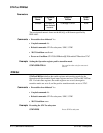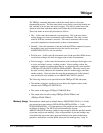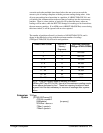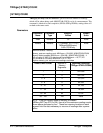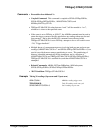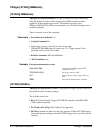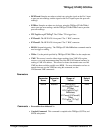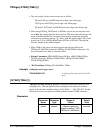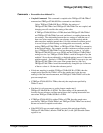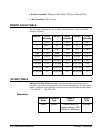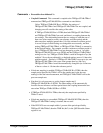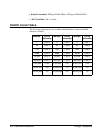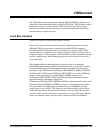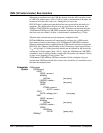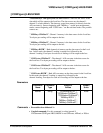
• The active edges for the various sources are as follows:
ECLtrg0, ECLtrg1 and DECLtrg active edge is the rising edge.
TTLTrg<n> and DTTLtrg active edge is the falling edge.
EXTernal1, EXTernal2, and DEXTernal active edge is the falling edge.
• When using DECLtrg, DEXTernal, or DTIMer, at least one pre-arm pulse must
occur after the arming signal has been received. This means that after the pre-arm
count is reached and the arm is accepted, there must be another pre-arm pulse
which arrives ([reference period * 3] + 60 ns) after the arming signal. This would
typically be 210 ns if SENSe:ROSCillator:SOURce is INTernal. The digitizer
does not sample on the additional pulse.
• When TIMer is the source, the desired period must be specified by the
TRIGger:STARt:TIMer1 and/or the TRIGger:STARt:TIMer2 commands. See
these commands for a table of allowable values.
• Related Commands: SENSe:ROSCillator:SOURce, ARM:STARt:SOURce,
OUTPut subsystem, TRIGger:STARt:TIMer1, TRIGger:STARt:TIMer2,
SENSe:SWEep:POINts
• *RST Condition: TRIGger:STARt:SOURce TIMer
Example Setting the start trigger source
TRIG:SOUR ECLT0 A reading will be taken with each ECLT0
pulse
[:STARt]:TIMer[1]
TRIGger[:STARt]:TIMer[1] <period > specifies the time period between each
sampling event. The time period must be a multiple of the reference oscillator
period, with allowable multiples being 1,2,4,10,20,40,........1E8, 2E8, 4E8. See the
table below for the exact periods available with the internal 20 MHz reference.
Parameters
Parameter
Name
Parameter
Type
Range of
Values
Default
Units
period
numeric reference period to
reference period * 4E8 |
MINimum | MAXimum
seconds
TRIGger[:STARt]:TIMer[1]
278 Command Reference TRIGger Subsystem



